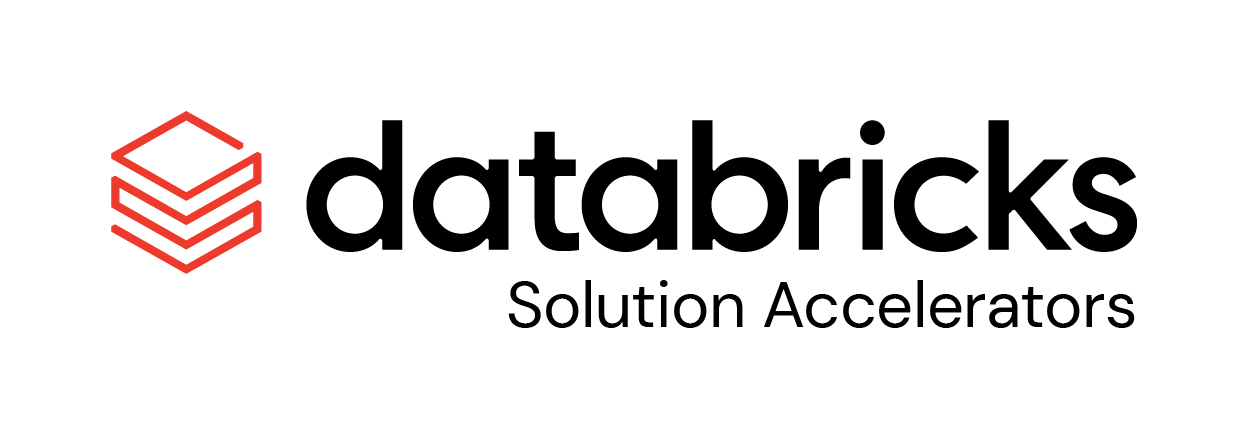Working with various x12 EDI transactions in Spark on Databricks.
pip install git+https://github.com/databricks-industry-solutions/x12-edi-parserfrom databricksx12 import *
from databricksx12.hls import *
import json
from pyspark.sql.functions import input_file_name
hm = HealthcareManager()
df = spark.read.text("sampledata/837/*txt", wholetext = True)
rdd = (
df.withColumn("filename", input_file_name()).rdd
.map(lambda x: (x.asDict().get("filename"),x.asDict().get("value")))
.map(lambda x: (x[0], EDI(x[1])))
.map(lambda x: { **{'filename': x[0]}, **hm.to_json(x[1])} )
.map(lambda x: json.dumps(x))
)
claims = spark.read.json(rdd)
#Create Claims tables from the EDI transactions
claims.createOrReplaceTempView("edi")--flatten EDI
drop table if exists stg_claims;
CREATE TABLE stg_claims
as
select *
from
(
select *, explode(trnx.Claims) as clms
from
(
select filename, edi_control_number, edi_date, edi_time,
edi_recipient_qualifier_id, edi_sender_qualifier_id, edi_standard_version,
fgs.fg.`FunctionalGroup.control_number` as fg_control_number,
fgs.fg.`FunctionalGroup.date` as fg_date,
fgs.fg.`FunctionalGroup.time` as fg_time,
fgs.fg.`FunctionalGroup.receiver` as fg_receiver,
fgs.fg.`FunctionalGroup.sender` as fg_sender,
fgs.fg.`FunctionalGroup.standard_version` as fg_standard_version,
fgs.fg.`FunctionalGroup.transaction_type` as fg_transaction_type,
explode(fgs.fg.`Transactions`) as trnx
from
(
select
`edi.control_number` as edi_control_number,
`edi.date` as edi_date,
`edi.time` as edi_time,
`EDI.recipient_qualifier_id` as edi_recipient_qualifier_id,
`EDI.sender_qualifier_id` as edi_sender_qualifier_id,
`EDI.standard_version` as edi_standard_version,
explode(`FunctionalGroup`) as fg,
filename
from edi
) fgs
) trnx
) clms;
drop table if exists claim_header;
create table claim_header as
select
filename, edi_control_number, edi_date, edi_time, edi_recipient_qualifier_id, edi_sender_qualifier_id, edi_standard_version,
fg_control_number, fg_date, fg_time, fg_receiver, fg_sender, fg_standard_version, fg_transaction_type,
clms.claim_header.*,
clms.diagnosis.*,
clms.payer.*,
clms.providers.*,
clms.patient.name as patient_name,
clms.patient.patient_relationship_cd,
clms.patient.street as patient_street,
clms.patient.city as patient_city,
clms.patient.zip as patient_zip,
clms.patient.dob as patient_dob,
clms.patient.dob_format as patient_dob_format,
clms.patient.gender_cd as patient_gender_cd,
clms.subscriber.subsciber_identifier,
clms.subscriber.name as subscriber_name,
clms.subscriber.subscriber_relationship_cd,
clms.subscriber.street as subscriber_street,
clms.subscriber.city as subscriber_city,
clms.subscriber.zip as subscriber_zip,
clms.subscriber.dob as subscriber_dob,
clms.subscriber.dob_format as subscriber_dob_format,
clms.subscriber.gender_cd as subscriber_gender_cd
from stg_claims;
create table claim_line as
select filename, claim_id, cl.*
from (
select filename,
clms.claim_header.claim_id,
explode(clms.claim_lines) as cl
from stg_claims
) foo;
df = spark.read.text("sampledata/835/*txt", wholetext = True)
rdd = (
df.withColumn("filename", input_file_name()).rdd
.map(lambda x: (x.asDict().get("filename"),x.asDict().get("value")))
.map(lambda x: (x[0], EDI(x[1])))
.map(lambda x: { **{'filename': x[0]}, **hm.to_json(x[1])} )
.map(lambda x: json.dumps(x))
)
claims = spark.read.json(rdd)
#Create Claims tables from the EDI transactions
%sql
--flatten EDI
drop table if exists stg_remittance;
CREATE TABLE stg_remittance
as
select *
from
(
select *, explode(trnx.Claims) as clms
from
(
select filename, edi_control_number, edi_date, edi_time,
edi_recipient_qualifier_id, edi_sender_qualifier_id, edi_standard_version,
fgs.fg.`FunctionalGroup.control_number` as fg_control_number,
fgs.fg.`FunctionalGroup.date` as fg_date,
fgs.fg.`FunctionalGroup.time` as fg_time,
fgs.fg.`FunctionalGroup.receiver` as fg_receiver,
fgs.fg.`FunctionalGroup.sender` as fg_sender,
fgs.fg.`FunctionalGroup.standard_version` as fg_standard_version,
fgs.fg.`FunctionalGroup.transaction_type` as fg_transaction_type,
explode(fgs.fg.`Transactions`) as trnx
from
(
select
`edi.control_number` as edi_control_number,
`edi.date` as edi_date,
`edi.time` as edi_time,
`EDI.recipient_qualifier_id` as edi_recipient_qualifier_id,
`EDI.sender_qualifier_id` as edi_sender_qualifier_id,
`EDI.standard_version` as edi_standard_version,
explode(`FunctionalGroup`) as fg,
filename
from edi
) fgs
) trnx
) clms ;
drop table if exists remittance;
create table remittance as
select filename, edi_control_number, edi_date, edi_time, edi_recipient_qualifier_id, edi_sender_qualifier_id, edi_standard_version,
fg_control_number, fg_date, fg_time, fg_receiver, fg_sender, fg_standard_version, fg_transaction_type,
clms.*
from stg_remittance;Currently supports 837s and 835s. Records in each format type are recommended to be saved separately to avoid any ambiguity and opaqueness, e.g. do not to mix 835, 837i, 837p in df.save() command.
from databricksx12 import *
from databricksx12.hls import *
import json
hm = HealthcareManager()
edi = EDI(open("sampledata/837/CHPW_Claimdata.txt", "rb").read().decode("utf-8"))
#Returns parsed claim data
hm.from_edi(edi)
#[<databricksx12.hls.claim.Claim837p object at 0x106e57b50>, <databricksx12.hls.claim.Claim837p object at 0x106e57c40>, <databricksx12.hls.claim.Claim837p object at 0x106e57eb0>, <databricksx12.hls.claim.Claim837p object at 0x106e57b20>, <databricksx12.hls.claim.Claim837p object at 0x106e721f0>]
#Print in json format
print(json.dumps(hm.to_json(edi), indent=4))
"""
{
"EDI.sender_tax_id": "ZZ",
"FuncitonalGroup": [
{
"FunctionalGroup.receiver": "123456789",
"FunctionalGroup.sender": "CLEARINGHOUSE",
"FunctionalGroup.transaction_datetime": "20180508:0833",
"FunctionalGroup.transaction_type": "222",
"Transactions": [
{
"Transaction.transaction_type": "222",
"Claims": [
{
"submitter": {
"contact_name": "CLEARINGHOUSE CLIENT SERVICES",
"contacts": {
"primary": [
{
"contact_method": "Telephone",
"contact_number": "8005551212",
...
"""
#print the raw EDI Segments of one claim
one_claim = hm.from_edi(edi)[0]
print("\n".join([y.data for y in one_claim.data])) #Print one claim to look at the segments of it
"""
BHT*0019*00*7349063984*20180508*0833*CH
NM1*41*2*CLEARINGHOUSE LLC*****46*987654321
PER*IC*CLEARINGHOUSE CLIENT SERVICES*TE*8005551212*FX*8005551212
NM1*40*2*123456789*****46*CHPWA
HL*1**20*1
NM1*85*2*BH CLINIC OF VANCOUVER*****XX*1122334455
N3*12345 MAIN ST
N4*VANCOUVER*WA*98662
REF*EI*720000000
PER*IC*CONTACT*TE*9185551212
NM1*87*2
N3*PO BOX 1234
N4*VANCOUVER*WA*986681234
HL*2*1*22*0
SBR*P*18**COMMUNITY HLTH PLAN OF WASH*****CI
NM1*IL*1*SUBSCRIBER*JOHN*J***MI*987321
N3*987 65TH PL
...
"""""""
Look at all data refernce -> https://justransform.com/edi-essentials/edi-structure/
(1) Including control header / ISA & IEA segments
"""
from pyspark.sql.functions import input_file_name
( df.withColumn("filename", input_file_name()).rdd
.map(lambda x: (x.asDict().get("filename"),x.asDict().get("value")))
.map(lambda x: (x[0], EDI(x[1])))
.map(lambda x: [{**{"filename": x[0]}, **y} for y in x[1].toRows()])
.flatMap(lambda x: x)
.toDF()).show()
"""
+--------------------+----------+--------------------------+--------------+------------+-----------------------------+--------+
| row_data|row_number|segment_element_delim_char|segment_length|segment_name|segment_subelement_delim_char|filename|
+--------------------+----------+--------------------------+--------------+------------+-----------------------------+--------+
|ISA*00* ...| 0| *| 17| ISA| :|file:///|
|GS*HC*CLEARINGHOU...| 1| *| 9| GS| :|file:///|
|ST*837*000000001*...| 2| *| 4| ST| :|file:///|
|BHT*0019*00*73490...| 3| *| 7| BHT| :|file:///|
|NM1*41*2*CLEARING...| 4| *| 10| NM1| :|file:///|
|PER*IC*CLEARINGHO...| 5| *| 7| PER| :|file:///|
|NM1*40*2*12345678...| 6| *| 10| NM1| :|file:///|Please note the code in this project is provided for your exploration only, and are not formally supported by Databricks with Service Level Agreements (SLAs). They are provided AS-IS and we do not make any guarantees of any kind. Please do not submit a support ticket relating to any issues arising from the use of these projects. The source in this project is provided subject to the Databricks License. All included or referenced third party libraries are subject to the licenses set forth below.
Any issues discovered through the use of this project should be filed as GitHub Issues on the Repo. They will be reviewed as time permits, but there are no formal SLAs for support.





